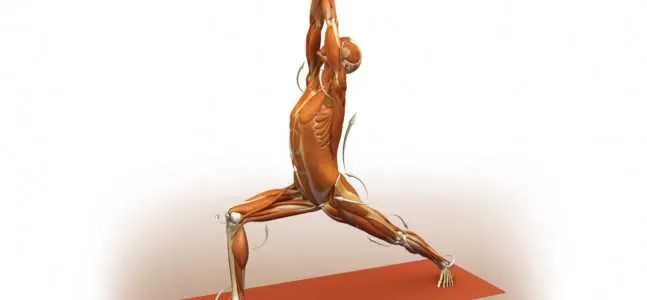Virbhadrasana pose or the warrior’s pose is one of the popular poses of yoga exercises because of its flexibility enhancing effects. This pose is named after an avatar of Hindu lord Shiva named “Virabhadra” who has taken revenge for the god Shiva.
It has mainly three forms which are described as following:
Virabhadrasana I
This is the first aspect of the warrior which represents his arrival while holding swords in both hands raised overhead.
Virabhadrasana II
The second aspect of the warrior representing his sight over the enemy while taking an offensive pose. One hand is in front of body and another behind it parallel to the ground.
Virabhadrasana III
The warrior’s last aspect representing the swift and precise attack on the enemy.
All of these poses demands lots of balancing and concentration to maintain the correct posture. Here we will discuss the first pose of this warrior series.
IMPLEMENTATION
- The pose starts with a Tadasana which requires you to stand straight with feet close together and hands stretched overhead joined at the palms.
- Step your right foot forward four to five feet away from the left foot but it should be aligned on the same axis of the left foot.
- Bend your right knee perpendicular to the ground. Your knee should be aligned to the ankle to prevent any knee injury.
- Relax the neck and shoulders by gazing upward or towards your hands.
- Keep your left leg stretched to balance the body by firmly placing the left foot into the ground. Alternatively, you can also lift the left heel off the ground and balance the body on the ball of the foot which is a more comfortable position.
- Lift your pubic bone towards your naval by stretching your spine upwards. Square your hips towards the front by moving the right hip backward and left hip forward.
Hold this position and take 5 – 10 deep breaths.
- Switch the legs and repeat the steps for the other side.
BENEFITS
Strengthens muscles
This exercise makes your neck, shoulders, calves, hamstring and back muscles stronger by conditioning them. It also prevents the risk of injury to these muscles by enhancing their endurance.
Stretches muscles
Stretching of muscles is like massaging them because it improves the blood circulation, relieves the stress and revitalize them. This exercise stretches the muscles of upper body especially the spine which helps in its realignment. It also stretches the lower body especially the flexor muscles, calves, hamstrings and groin muscles.
Corrects posture
Realignment of the spine rectifies the postures like hunched back and slouched shoulders. It also removes the stiffness of muscles of the neck and shoulders. This correction of postures also reveals your hidden height and thus makes you look taller.
Improves respiration
This exercise expands the chest, lungs and shoulders by stretching the concerned muscles which helps in improving the oxygen holding capacity of the lungs.
Improves functional efficiency
More inflow of oxygen into the body revives the functionality of the body and the results become visible with regular practice in form of improved digestion and elevated level of energy throughout the day.
Improves mental abilities
Since this pose is a complex one and demands poise, strength and balance to maintain it therefore regular practice of this pose increases the focus and concentration in your body.
VARIATIONS
This pose can be made more difficult by deepening the pose which can be done either by reducing the distance between feet or by increasing the length of the stride.
CAUTIONS
Patients with weak heart and tight Latissimus should avoid this pose. The increase in the gap between the legs can cause weakening of hamstrings and quadriceps. You can look forward instead of upward direction in case you have neck pain or severe stiffness.

